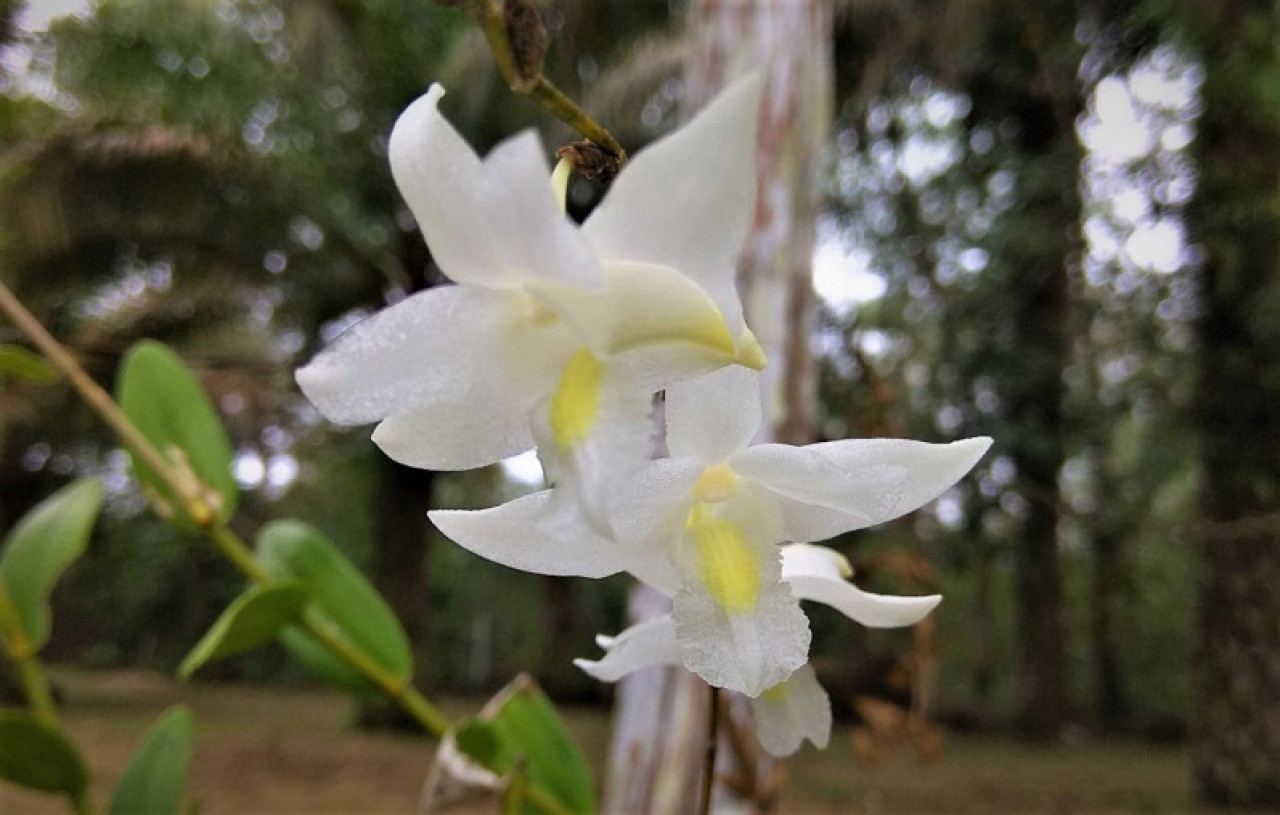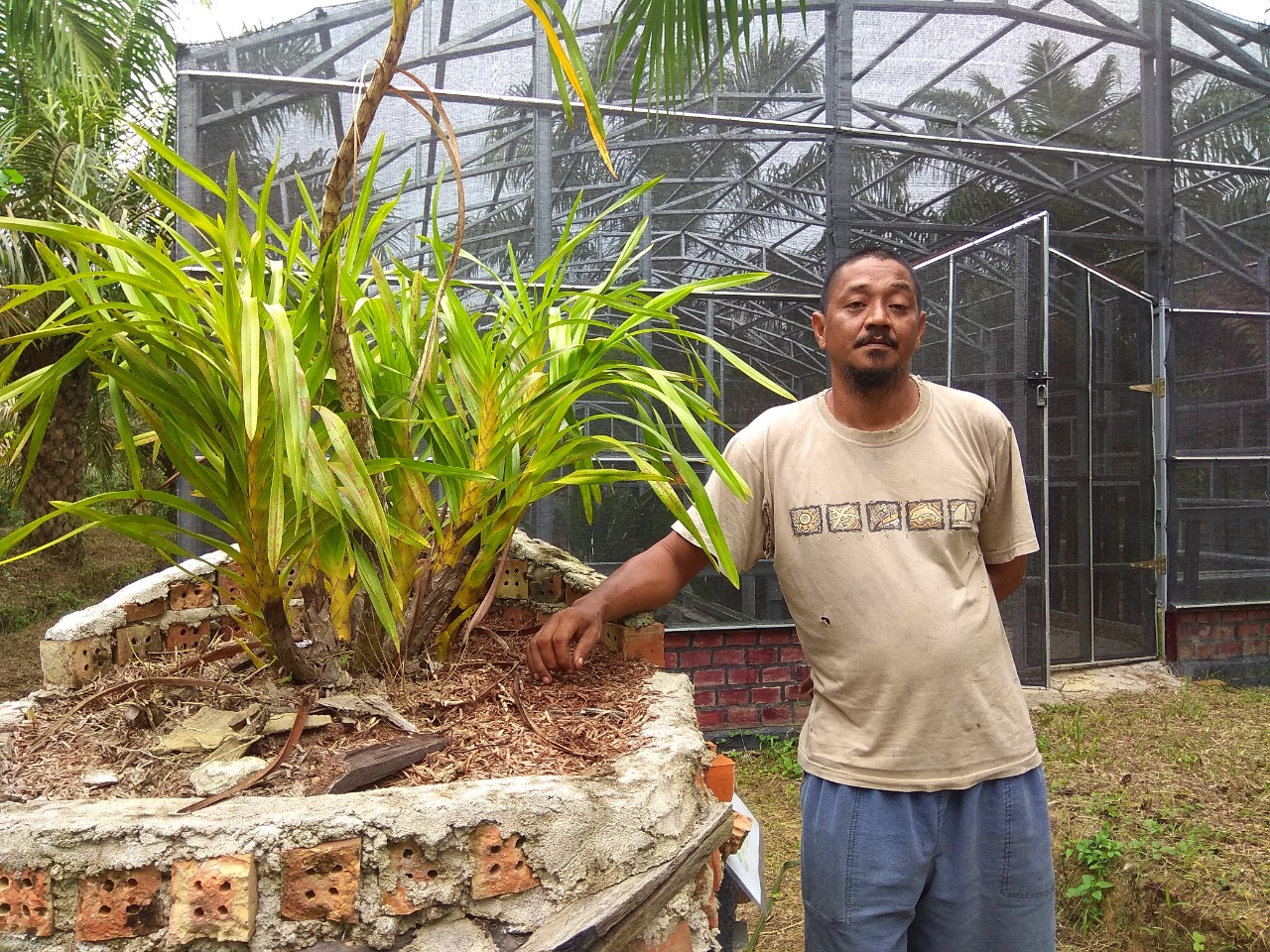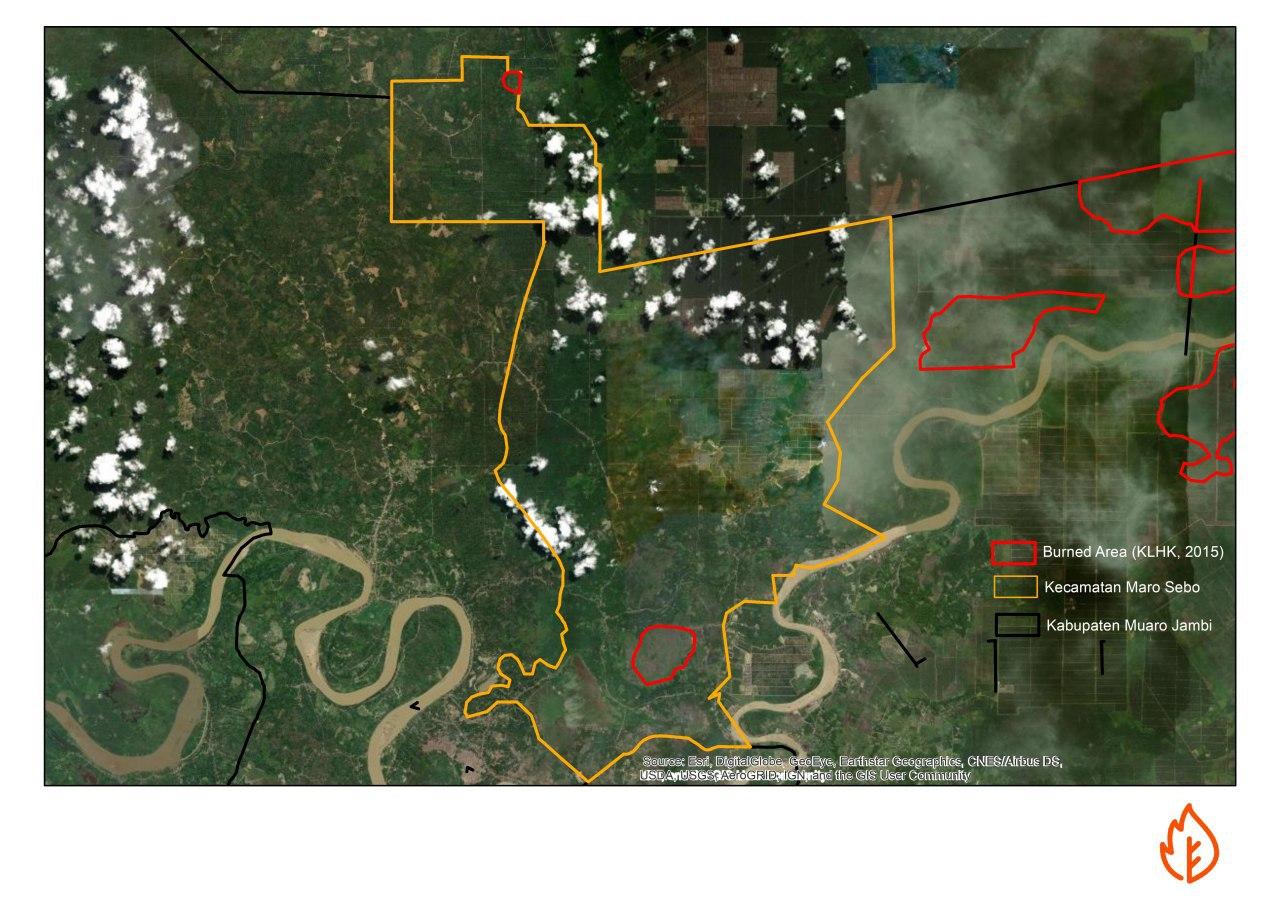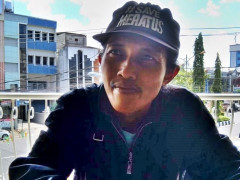Omnibus Law Threatens Peat Protection Efforts
By Hairul SobriSaving the Muaro Jambi Peat Orchid

Hundreds of natural orchids in the Muari Jambi District have now lost their natural habitat due to the forest and land fires that burnt 615 hectares of the "Batang Damar" forest area in 2015. To preserve these species, Gerakan Muaro Jambi Bersakat (GMJB) is cultivating the remaining natural orchids and will be placing them into the forest when there are one thousand orchids.
Adi was daydreaming while sitting on the terrace floor of his house in Muaro Jambi. His face was weary. He took a deep breath as he looked at the dozens of tiger orchids (Gramatophyllum speciosum) and other orchid species hanging forlornly in the garden.
Adi's anxiety started in 2009 when hundreds of hectares of forest in “Batang Damar” were uprooted and replaced with hundreds, if not thousands, of oil palm trees, destroying the largest natural orchid habitat in Muaro Jambi. In the past, the peat swamp trees covering an area of 615 hectares in Batang Damar serves as the habitat of hundreds of natural orchids species, but now only shrubs and weeds remain after the land has been burnt.
To prevent these natural orchids from becoming extinct, Adi along with dozens of Jambi Tulo residents and members of the GMJB community combed the forests in Muaro Jambi to the borders of East Tanjung Jabung, West Tanjung Jabung, and Batanghari.
"At that time, a forest that was about to be converted into a plantation, we went to that forest and saved the beautiful orchids. We managed to save 84 species, but we still don’t know the name of 10 species, to this day," he said.
The 40-year-old man doesn't remember the specific species of orchid that he found in Batang Damar. Some of the species he remembers are the Dendrodium, Pomatocalpa, Phalaenopsisi or Eria, Trichotocia ferox, Thelasis, Flicking ceologyne, Cymbidium, Appendicula, Javanica, and Bulbophyllum. His favorite orchid is the Dendrobium hendersonii which he calls the blue dove because of the orchid’s bluish-green leaves.
In addition, there is also a rare orchid, the Dendrobium Lampongense. This orchid is endemic to Lampung and has a brownish yellow flower with a red pattern on the inside. The flowers are 3-4 cm in size and spring from stems that have shed their leaves.
"Peatland orchids have their uniqueness. They have different patterns, colors, and scents. The Coelogyne asperata species is similar to the black orchid (Coelogyne pandurata) in Kalimantan, but the middle part of the flower is red and yellow,” Adi said
In 2013, GMJB proposed to make Batang Damar an orchid conservation area in Muaro Jambi District. This effort bore fruit in 2015 when Burhanuddin Mahir, the Muaro Jambi District Head at the time, came to Muara Sebo and stated that the Batang Damar forest would be used as a conservation area and a tourism area for natural orchids.
However, barely a week after Burhanuddin's arrival, fire devoured the Batang Damar area. The peat swamp was full of ember and smoke, burning everything on it.
“We were desperate when the fire broke out in Batang Damar, as there was nothing left to save. The 615 hectares of land burnt to the ground, the orchids were also destroyed, everything was gone," recalled Adi.
He suspected that the Batang Damar area was deliberately burned for business purposes because at that time many Jambi Tulo, Mudung Darat, and Bakung villagers have agreed to sell their rice fields to the company.
The Batang Damar area is currently under the control of PT Sumber Sedayu and PT Agro Bumi Lestari. It is only a matter of time before the peat swamp is converted into oil palm and jabon plantations.
After the devastating 2015 forest and land fires, the community lost the drive to manage orchids. There was nothing they could do because the Batang Damar orchid habitat had burnt to the ground.
Their drive to save orchids began to rise again in 2017. At that time, the GMJB Community was determined to collect 1,001 tiger orchids (Gramatophyllum speciosum) which were considered to be highly adaptable species to be cultivated outside of their natural habitat. In addition, the tiger orchid is unique because it is the largest and heaviest orchid species in the world.
However, caring for natural orchids outside of their habitat is not an easy matter. Improper handling will cause the orchid to quickly wither and even die when exposed to direct sunlight. In addition, the maintenance of hundreds of orchids outside of their habitat also requires high costs. Orchids need to be cultivated in a greenhouse, which is a special steel-framed building covered with paranet to resemble the conditions of natural orchid habitat. Currently, there are approximately 74 remaining peat swamp orchid species.
"The maintenance of these natural orchids costs a lot, we’re not just saving one or two species in nature, but dozens of species and hundreds of orchids."
To get around this situation and to achieve their target of saving 1,001 orchids, the GMJB community opened the Sakat Lebung Panjang Park which serves as a tourism, education, and orchid breeding in Muaro Jambi. Adi's three and a half hectares of the plantation was converted into Sakat Park.
At the Sakat Lebung Panjang Park, tourists have the opportunity to adopt an orchid by paying Rp 100,000. The adopted orchid will be named after the adopter and will then be cared for by the GMJB community until it is ready to be placed in the wild. To date, more than 50 orchids have been adopted. The visiting tourists are usually relatives of the GMJB members or environmental activities living from around the Sakat Lebung Park. However, there are also tourists from Yogyakarta, Bandung, Bali, and Jakarta.
In addition to adopting the park’s orchids, visitors can also donate their own orchids to be managed by the GMJB. When the GMJB has adopted, donated, and cultivated one thousand orchids, Adi and the GMJB community aspire to return these orchids to a beautiful and protected forest area.
Contacted separately by telephone, the Vice District Head of Muaro Jambi, Bambang Bayu Suseno, admitted that he had communicated with the Jambi Provincial Agriculture Office to assist with the Muaro Jambi orchids cultivation. The preliminary stage was to identify existing orchids and potential cultivation, as well as to provide assistance in their management.
Bambang admitted that the government is ready to encourage the development of Muaro Jambi orchids’ potential and to assist in preventing them from being extinct. However, unfortunately, a limited budget is always an issue, this prevented the government from making the orchid protection program a district priority program.
"If after all of this, the government still won't help, I'll keep defending the greenhouse, no matter the method, I’ll continue fighting," said Adi.
_.gif)





